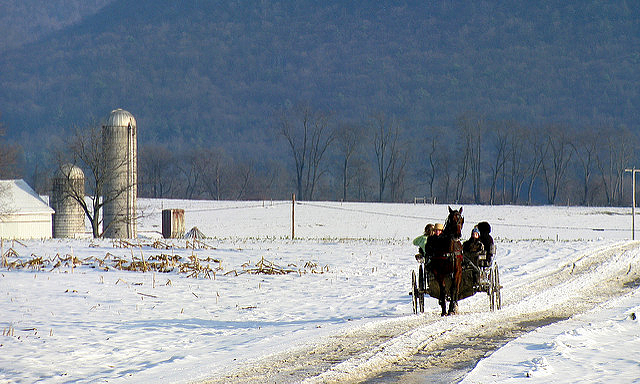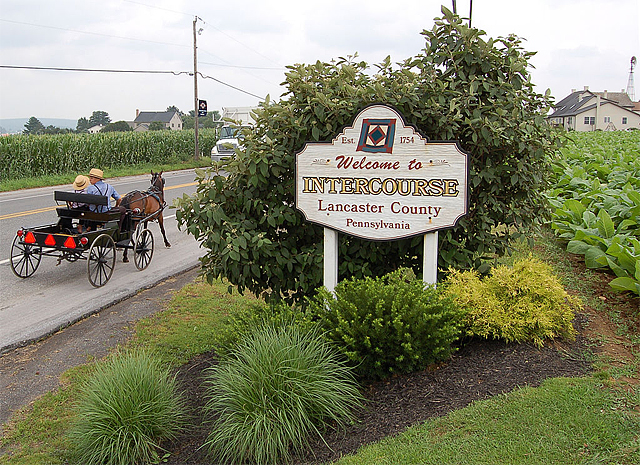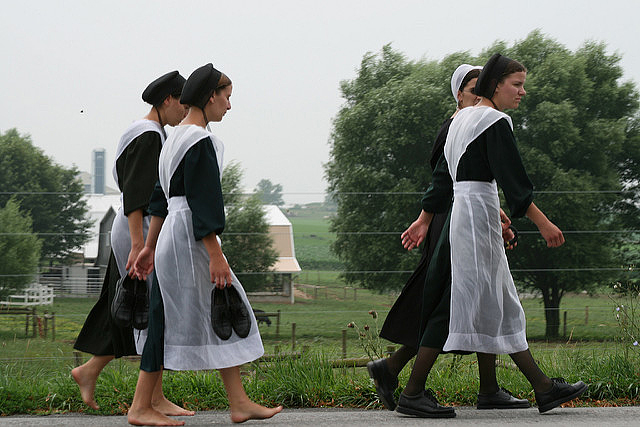Some Amish entrepreneurs in Lancaster County have started businesses that erect temporary buildings for Amish weddings, which are often held at this time of year. On December 25, the Philadelphia Inquirer ran a story explaining the ways the Amish handle their large wedding parties.

With much of the farm work concluded, late fall and early winter are ideal times in southeastern Pennsylvania for Amish families to organize weddings. The difficulty is that 300 or more family members and friends might want to come, yet large facilities adequate for hosting such crowds are scarce in farm country. Their horse and buggy culture militates against everyone going into larger towns or cities to use commercial wedding venues.
Companies have formed to help solve the problem. The temporary facilities these companies provide consist of buildings fabricated in sections that can quickly be erected and bolted together, much like prefabricated houses. They can then be easily taken apart after the wedding day and moved on to the next location. They are often set up in the yard of the parents of the bride. The business will supply a small crew, which is usually supplemented by men recruited by the host family. A typical temporary wedding structure can be erected in a few hours.

The journalist writing for The Inquirer, Jennifer Kopf, watched an Amish family preparing for a wedding in the Strasburg area of Lancaster County. In that case they did not use the services of a temporary building company but did all the work themselves. The father in the family, a carpenter, had taken a greenhouse apart and saved many parts from it, such as wooden studs and plywood from the walls.
A floor had been salvaged from a construction site while windows and doors had been salvaged from other buildings. The men erected the framework for the temporary structure, fitted in the doors and windows that were on hand, added plywood around the bases of the walls to strengthen the building, put in a temporary sink, and brought in a heater to set in a corner. After they stretched sheet plastic over the outside, they had a temporary building in which the daughter of the family could be married.

Before they finished, the Amish men erected another temporary building to connect the main wedding structure to the back porch of the house. The connector building was used for the preparation of foods. The family rented ovens and stoves for the use of wedding guests who brought dishes that needed to be heated before sharing with others. The family had arranged for three wagon-loads of portable benches to be brought for the occasion. They were designed to be quickly converted after the wedding ceremony into tables on which to serve the meal.
A few days later, when the journalist visited again, the benches were gone, the carpeting had been rolled up, and the father of the bride was removing the floorboards from their support beams. Once the weather improved, he planned to remove the plastic sheeting and dismantle the rest of the structure, all of which would be saved and reused for other projects around the homestead.